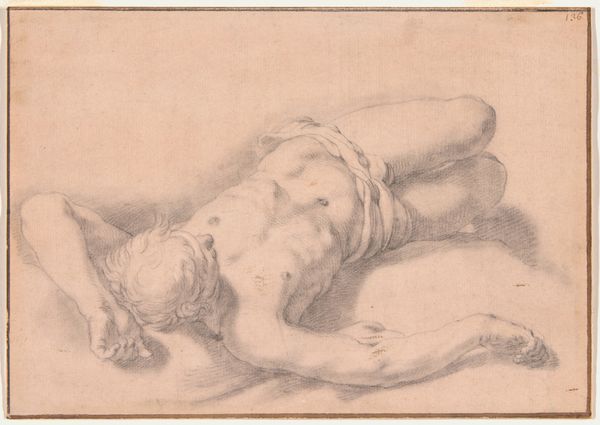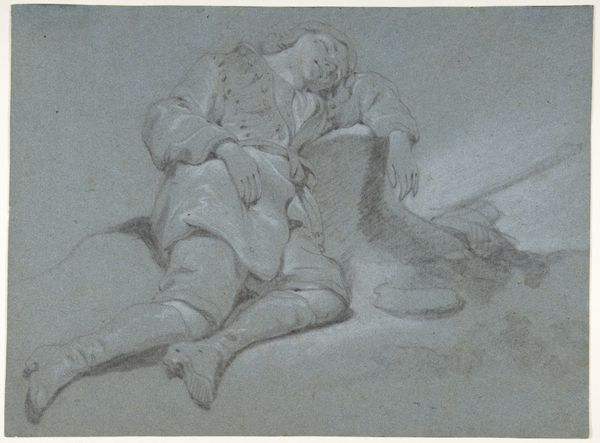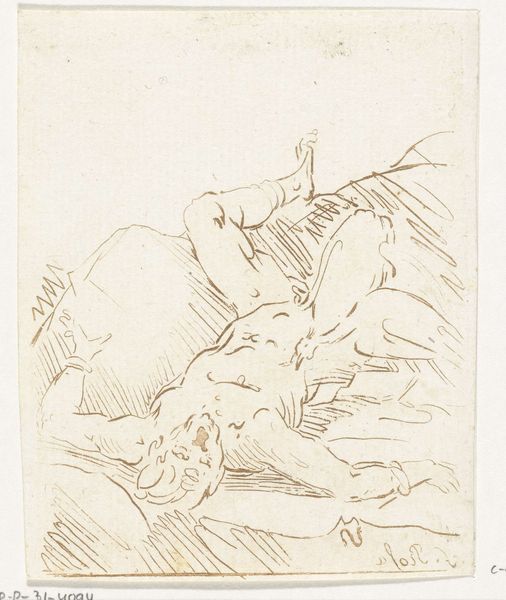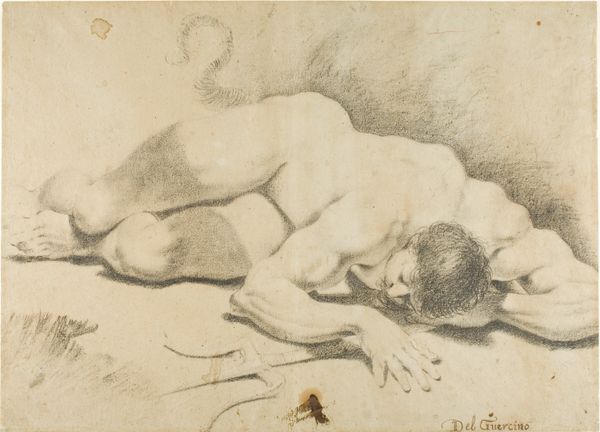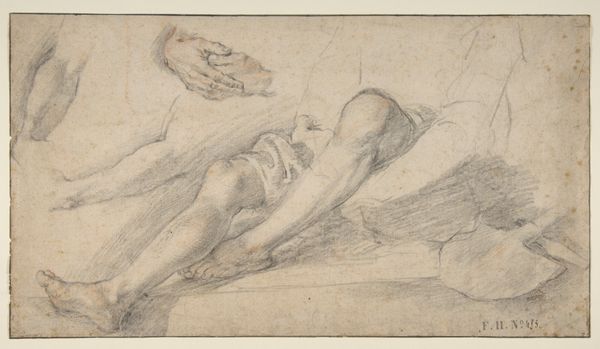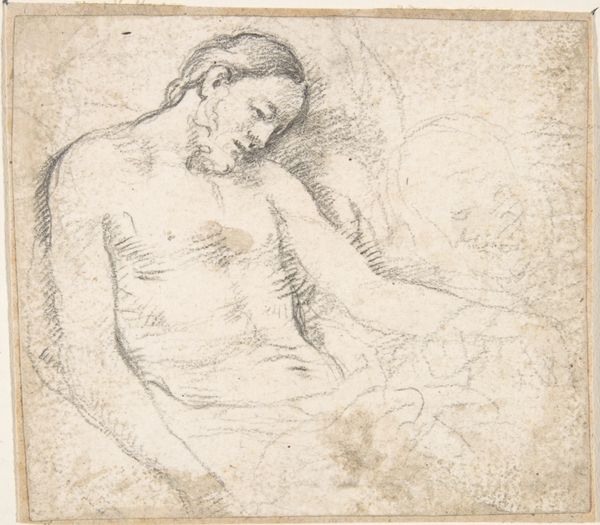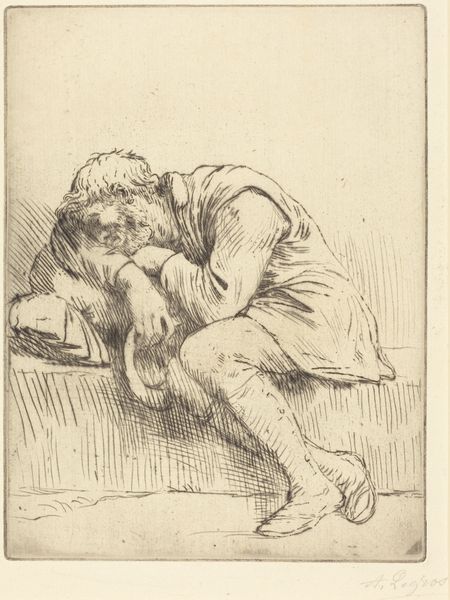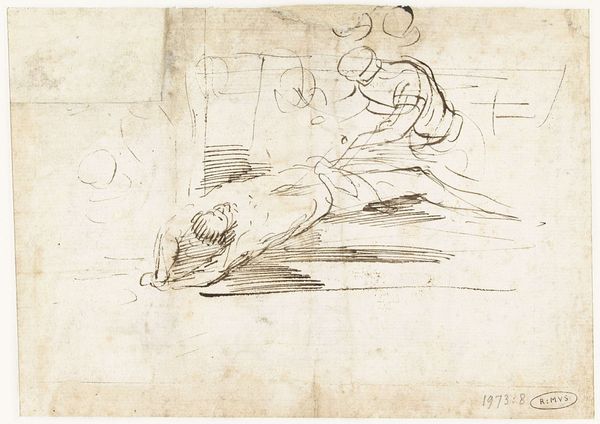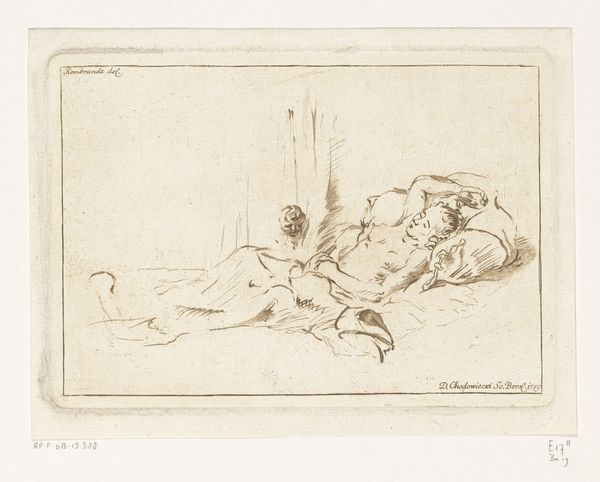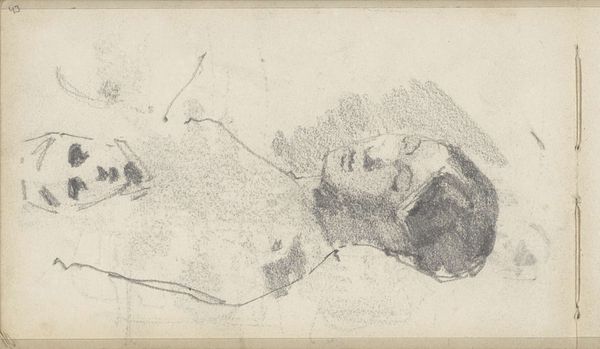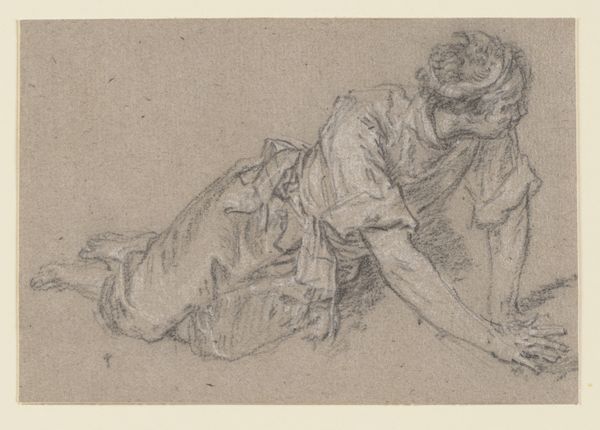
drawing, pencil, charcoal
#
portrait
#
drawing
#
baroque
#
charcoal drawing
#
pencil drawing
#
pencil
#
charcoal
#
academic-art
#
nude
Dimensions: 272 mm (height) x 474 mm (width) (bladmaal)
Curator: Here we have "Tilbagestyrtet nøgen mand," or "Overthrown Nude Man," a drawing rendered in pencil and charcoal. It’s believed to be the work of Marcus Tuscher, created sometime between 1720 and 1751. It now resides here at the SMK, the National Gallery of Denmark. Editor: Whoa. My gut reaction? He looks like he’s either having a terrible dream or a really profound epiphany. It’s a vulnerable image, laid bare, quite literally. The dramatic pose with the raised arm creates a strong sense of tension. Curator: The figure’s pose, sprawled and seemingly caught mid-fall, does convey that sense of vulnerability. Consider the era: this is Baroque sensibility bleeding into Academic Art. The exaggerated musculature, the almost theatrical lighting… they're all signifiers. But the subject… that's where the narrative shifts. We're used to seeing triumphant nudes, athletic gods… Editor: Right, muscle-bound heroes! This guy looks like he just tripped over his own feet. There’s an unexpected honesty to it. The light and shadow play across the body make him feel so real, and the upturned face adds this element of desperation, like he is gasping for air. It also occurs to me that he doesn’t seem stylized in the way gods often were; it’s as if we caught someone in the moment of becoming or unbecoming… I like that vulnerability as you mentionned, that he is just a man. Curator: Absolutely. Think about the symbols inherent in depicting a nude figure: ideals of beauty, strength, often linked to power. Tüscher subverts all of that here. His “Overthrown Nude Man” is more a contemplation on fragility, the precariousness of existence, perhaps even a challenge to the idealized forms so beloved by the Academy. It invites the viewer to connect with something human, fallible. Editor: That subversion is everything, isn't it? And to render it so simply, with pencil and charcoal. Stripped down in material, too. I imagine Tüscher working quickly, almost sketching a fleeting thought… Curator: Exactly! It’s a poignant snapshot. And it feels remarkably contemporary for its time. The questions it raises about strength and vulnerability, perfection and reality are eternal, don't you think? Editor: I do. It really hits you right in the solar plexus, that understanding of shared struggle and mortality. The imperfection is what makes it memorable, for me at least. Curator: Well said. It’s an image that lingers.
Comments
No comments
Be the first to comment and join the conversation on the ultimate creative platform.
